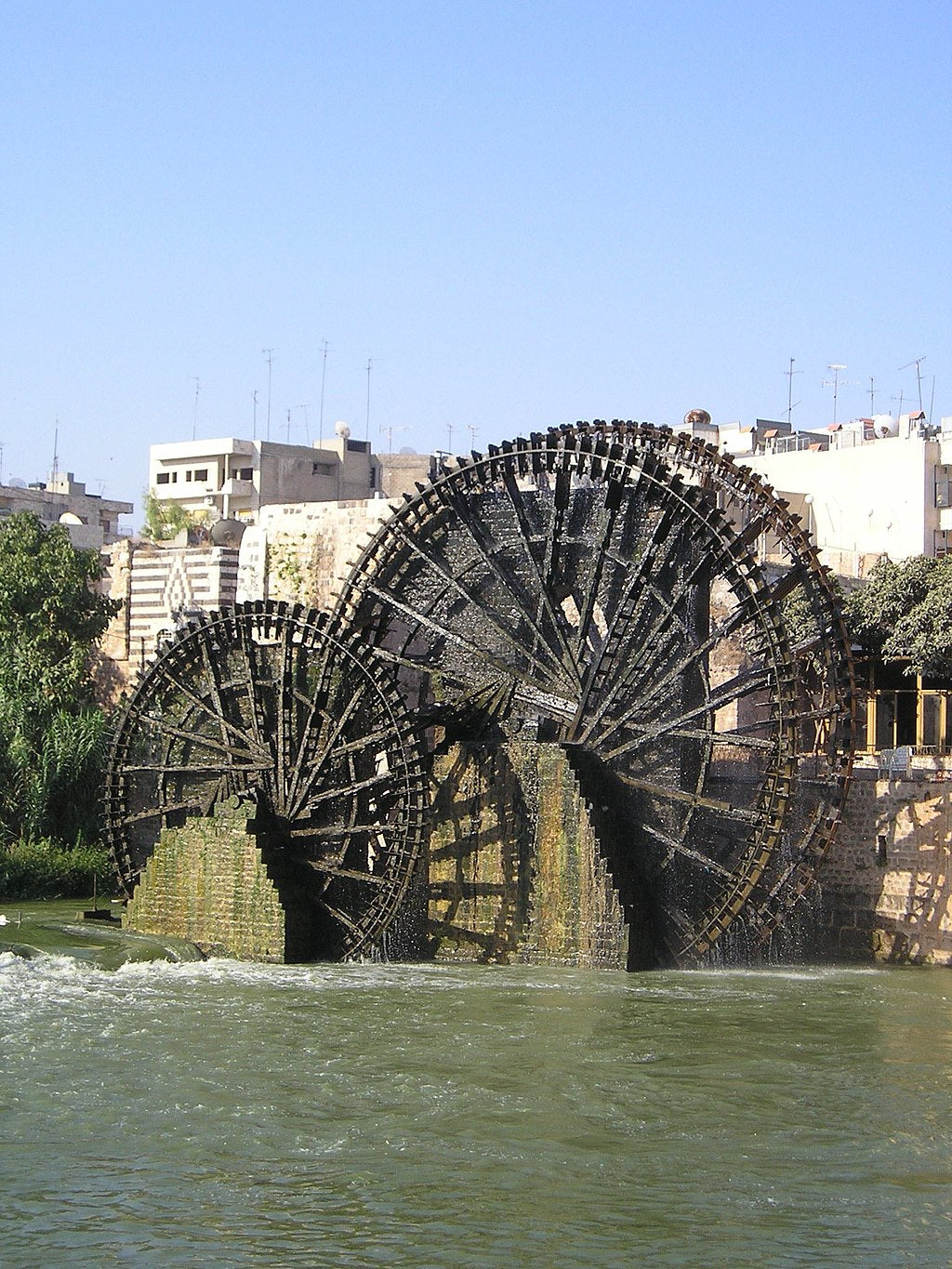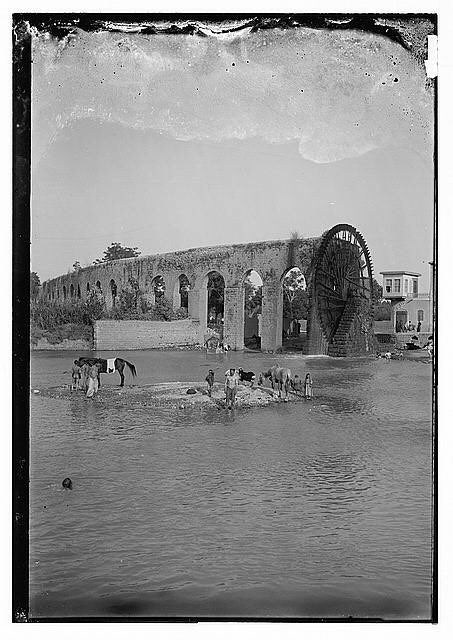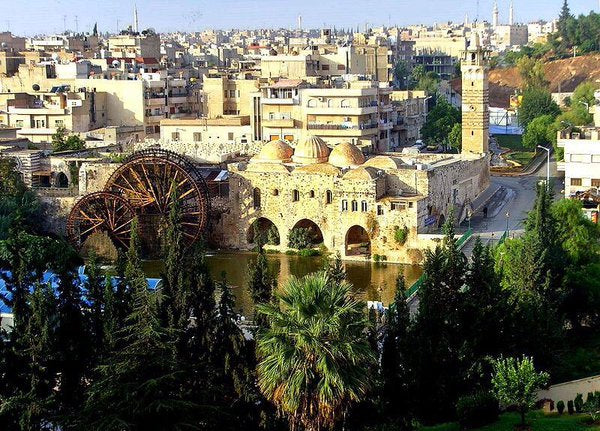The Norias

What are the Norias?
The Norias are a series of 17 water wheels on the banks of the Orontes River in the ancient city of Hama, Syria. Citizens of Hama, or Hamwis, take pride in the Norias. They are a testament to Hama's extensive architectural history.

Who built the Norias?
The first Hama Norias were built by the Byzantines from 330 - 1400 CE. The following Islamic Ayyubid Dynasty continued building more Norias until roughly 50 Norias functioned in the Orontes River.

What is the purpose of the Norias?
The Norias are irrigation devices. The Orontes River is very level and flows slowly, making irrigation directly from the river difficult. The Norias raise the water using buckets attached to the rim. The water is dispatched into aqueducts that send the water through irrigation channels reaching the farmlands of Hama.
Today, the Norias no longer function as irrigation devices, but only as a symbol of Hama's heritage and history.

Why are only 17 Norias left from the original 50?
The original 50 Norias became only 20 Norias by 1930 when industrialization reduced their usefulness. The Norias were neglected for newer modes of irrigation. By 1970 only 8 Norias were functional.
In 1982, Syrian dictator Hafez Al-Assad massacred the city of Hama. Assad deliberately bombed multiple functional and non functional Norias as to debilitate the city.
In 1987, a full restoration project resulted in the 17 Norias existing today. However, the Norias remain non functional as irrigation devices because Assad intentionally did not restore the aqueducts that he bombed. Assad ensured that Hama's farmlands remain in a state of drought until today.
